American Horror Story: Asylum Blu-ray Movie
HomeAmerican Horror Story: Asylum Blu-ray Movie 
20th Century Fox | 2012-2013 | 554 min | Rated TV-MA | Oct 08, 2013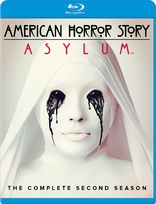
Movie rating
8 | / 10 |
Blu-ray rating
| Users | 4.0 | |
| Reviewer | 4.0 | |
| Overall | 4.0 |
Overview
American Horror Story: Asylum (2012-2013)
Set in 1964, American Horror Story: Asylum takes us into a Church-run haven for the criminally insane, ruled with an iron fist by Sister Jude (Jessica Lange), a nun with a troubled past. Inside this locked down facility, danger lurks around every corner. From Nazis and serial killers, to mutants and aliens, no one is safe inside these walls.
Starring: Evan Peters, Sarah Paulson, Denis O'Hare, Jessica Lange, Frances ConroyDirector: Bradley Buecker, Alfonso Gomez-Rejon, Michael Uppendahl, Ryan Murphy (I), Michael Lehmann (I)
| Horror | Uncertain |
| Mystery | Uncertain |
| Psychological thriller | Uncertain |
| Erotic | Uncertain |
| Period | Uncertain |
| Thriller | Uncertain |
| Drama | Uncertain |
Specifications
Video
Video codec: MPEG-4 AVC
Video resolution: 1080p
Aspect ratio: 1.78:1
Original aspect ratio: 1.78:1
Audio
English: DTS-HD Master Audio 5.1
Subtitles
English SDH, French, Spanish
Discs
50GB Blu-ray Disc
Three-disc set (3 BDs)
Packaging
Slipcover in original pressing
Playback
Region A (B, C untested)
Review
Rating summary
| Movie | 4.0 | |
| Video | 4.0 | |
| Audio | 4.5 | |
| Extras | 2.5 | |
| Overall | 4.0 |
American Horror Story: Asylum Blu-ray Movie Review
The inmates are indeed running this 'Asylum'.
Reviewed by Jeffrey Kauffman October 6, 2013Scary movies typically don’t frighten me. Oh, sure, I’ll have the same startle response as anyone if there’s a sudden jump cut accompanied by a booming low frequency effect on the soundtrack, something that I feel is more akin to an involuntary reflex than due to any true feeling of trepidation, but scenes that send my wife diving under the covers or (even better) huddling nervously into my shoulder rarely tend to raise my blood pressure or perspiration levels even one iota. And yet it is without an ounce of shame that I admit that the first season of American Horror Story creeped me out in a very major way, especially when it became obvious that (spoiler alert) no one was going to make it out alive. While there have certainly been anthology series before this one, even ones with repertory companies like this one exploits, there has frankly never been a show quite like American Horror Story. The first season explored the deteriorating relationships in an already dysfunctional family, all within the framework of a more or less traditional haunted house story. The “house” in this second season is the imposing Briarcliff Mental Institution in Massachusetts, and the “family” turns out to be a large and unruly aggregation of patients and those who ostensibly “care” for them. The second season of American Horror Story has an unabashed Grand Guignol quality much of the time, something distinctly at odds with the decidedly more quietly sinister ambience of the first season, and for that reason, fans of the first season may find a few adjustments are in order, including jettisoning some expectations that this season will feel and play much like the first. While American Horror Story: Asylum is a good deal more frenetic, even hyperbolic, than the first year of the series, it’s also rather unexpectedly more hopeful—if, that is, you can make it all the way to the end of what turns out to be a rather tortuous journey.

Jessica Lange made an indelible impression in the first year of American Horror Story as mysterious neighbor Constance Langdon, but that impression is all but obliterated by her turn as Sister Jude, the seemingly cruel and sadistic “headmistress” of Briarcliff. Lange of course has some experience with asylums, having received her first Best Actress Academy Award nomination for her searing turn as Frances Farmer in Frances. (Forgive this brief detour, but for those who are interested in reading about what really happened to Farmer, which is certainly sad but decidedly less sensational than what was portrayed in the Lange biopic, I refer you to my research, which definitively debunked many of the outright fictions in Frances and its source material. Ms. Lange and I later “co-starred” together on the A&E Biography episode about Farmer, though our segments were taped separately.) Lange, here adopting a pitch perfect New England accent, creates an unforgettable portrayal of a nun haunted by her past and who is determined to confront evil in a variety of forms with a stiff upper lip and a supply of even stiffer whips. While this season of American Horror Story is filled to the brim with disturbing performances, Lange adds one of the most distinctive characters she's ever essayed in her now long and notable career.
Much like the first season of American Horror Story, more than one timeframe is explored in American Horror Story: Asylum, though in this case that gambit is relegated to only two eras, 1964 and the present day. The series utilizes an often jarring but ultimately well crafted ping ponging approach, at least in the bookending episodes, which contrasts the nefarious goings on at the asylum in the sixties with its present day state of (supposedly) abandoned disrepair. The Sister Jude storyline is part of the 1964 timeframe, where we’re also introduced to the asylum’s mad doctor, Arthur Arden (James Cromwell, an Emmy winner for this performance), who may or may not be a former Nazi experimenter a la Josef Mengele. Also along for the ride are the asylum’s founder, Monsignor Howard (Joseph Fiennes), Sister Jude’s apprentice novice, Sister Mary Eunice (Lily Rabe), who has a close encounter of the first kind with Satan, and Dr. Oliver Thredson (Zachary Quinto), a modern thinking psychiatrist who initially shows up to interview a supposed serial killer but who has his analytical irons in more than one fire.
On the patient end of things we have Lana Winters (Sarah Paulson), a muckraking journalist who is intent on exposing Briarcliff’s manifold abuses but who ends up being institutionalized herself due to her lesbianism; Kit Walker (Evan Peters), the supposed serial killer Thredson is interviewing, who insists he never killed his wife and that she was in fact abducted by aliens; and Grace Bertrand (Lizzie Brocheré), a young vixen who catches Kit’s eye but who is accused of having gone all Lizzie Borden on her father and stepmother. There’s also a chilling cameo of sorts by Chloë Sevigny as Shelley, a nymphomaniac who finds herself the subject of one of Arden’s disturbing experiments.
The cast is therefore quite large (and this précis omits several other supporting characters, including first season holdover Frances Conroy as nothing less than the Angel of Death), but perhaps surprisingly, American Horror Story: Asylum seems rather cohesive—if a certain amount of slack is granted. This season has less of the slowly building dread that the first season achieved, and instead tends to focus more on intense moments of carnage and unsettling psychological warfare. And despite the first season’s rampant infidelity and latex suited paramours, this season is decidedly more salacious than the first, often though not always in a sexual manner. While Lana’s lesbianism is a throughline, and includes a rather freakish descent into “aversion therapy” in one episode, other elements—like a chronically masturbating male inmate—are probably more overt. What’s really salacious here, though, more than even the outright sexual content, is the overwhelming feeling of voyeurism, an aspect that ultimately peers into some long hidden secrets for several major characters.
While the endgame of this season may not satisfy—or creep out—viewers in the same way as the first season did, it contains several interesting choices on the part of the creative staff. While individual episodes have their fair share of little twists and turns, and some may accuse the series of depending too much on too convenient coincidences and interrelationships, the finale of the series manages to be both uplifting in a peculiar way as well as just slightly (and appropriately) off kilter. The nature of evil may not ever be adequately explained here (can it ever be?), but there’s a palpable feeling of available grace and salvation clinging around the fetid edges of Briarcliff. It’s an asylum granted by some inner workings of the soul and not imposed by what now seem like the primitive techniques mental institutions used to regularly employ to tame the demons—real or imagined—that haunted patients and, frankly, those who cared for them.
American Horror Story: Asylum Blu-ray Movie, Video Quality 
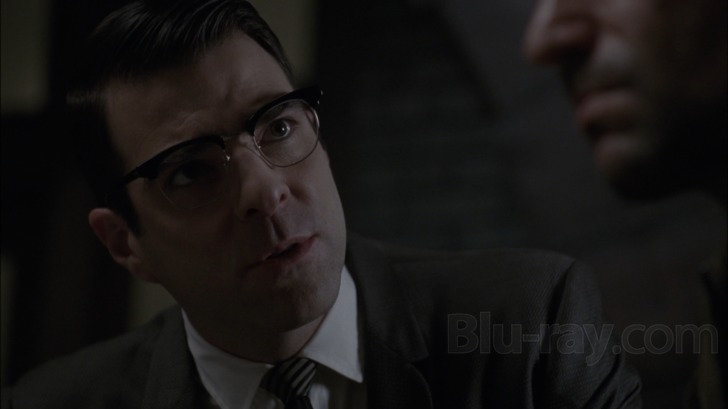
American Horror Story: Asylum is presented on Blu-ray courtesy of 20th Century Fox Home Entertainment with an
AVC encoded 1080p transfer in 1.78:1. This is an even more stylized season than last year in term's of filming styles and
fairly aggressive tweaking in post, so typical criteria like accurate color, consistent contrast and sharpness of image don't
really apply here as they might in other less variegated series. Let's look at each of these categories separately. Color
grading is all over the map here, from a pushed, slightly artificial look in the contemporary moments, to an often drained,
nearly monochromatic (and in some instances, actually black and white) ambience. Contrast has also been toyed with
rather dramatically. Like the color, it's pushed in the contemporary sequences, adding a kind of lurid glowing effect. This
technique is not relegated to
merely the contemporary sequences, however (see
screenshot 6 of the Corvair—the Corvair!—entering the asylum grounds). Many scenes set in 1964 feature whites
that don't just bloom—they
virtually explode, obliterating large areas of the frame. On the other hand, contrast is at other times dialed down to a
point where, for instance, Fiennes' Monsignor Howard, dressed in his clerical black, can look like a disembodied head
bobbing
like an isolated balloon as he emerges from the shadows of Briarcliff. Similarly, the series' directors and DPs regularly play
with
perspective and focus in unusual ways. Often individual items will be left in sharp focus while the bulk of the frame is a
blurry mess (look at screenshot 16 of Sister Jude indulging in a little drink for a good example).
So with all of this said, how does this high definition presentation actually look? In a word: excellent, if it's
understood going in that this is by design not a pristine, impeccably sharp appearing series. The series is not just
figuratively dark, it's literally so, with huge swaths of the show taking place in near darkness or at the very least in less
than adequately lit conditions, and occasionally noise will spike just slightly in the darkest scenes (a good example is
during the movie screening in the storm episode). But fine detail is quite remarkable in the series' many close-ups,
offering both disturbing visions (Lana's temple burn marks after her forced electroshock treatments) and really
disturbing (the horrifying effects of Arden's experiments on Shelley).
American Horror Story: Asylum Blu-ray Movie, Audio Quality 
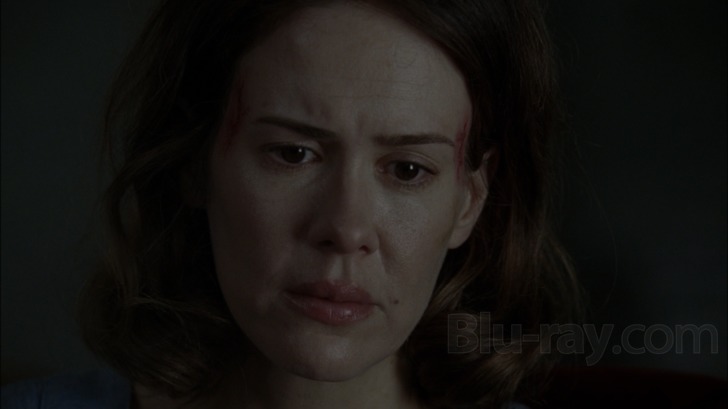
American Horror Story: Asylum's lossless DTS-HD Master Audio 5.1 track is a major boon to the series' spooky, claustrophobic atmospherics. Immersion is extremely well handled, with, for example, inmate screams of terror suddenly popping out of one of the surround channels, or the scurrying feet of Bloody Face panning nicely as he tracks down his next victim. This season also utilized a couple of great source cues, including everything from "Dominique" to "The Name Game", which sound great, albeit appropriately vintage, with that good old analog needle to vinyl quality. Dialogue is clean and clear, boosted by the same excellent fidelity that pervades the entire track. Dynamic range is as hyperbolic as the rest of this season.
American Horror Story: Asylum Blu-ray Movie, Special Features and Extras 
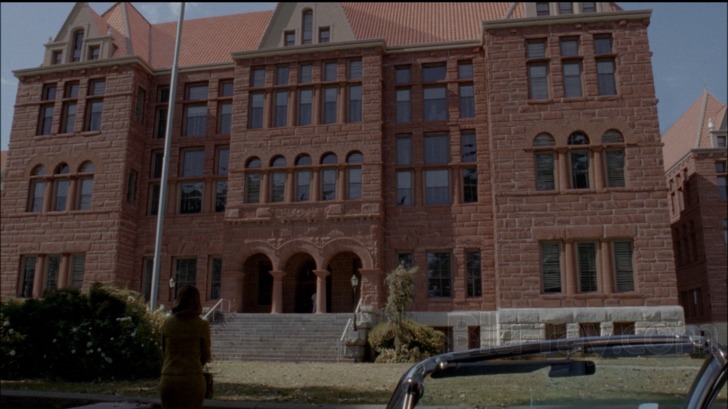
Disc One
-
No special features are offered on this Blu-ray disc.
- Deleted Scenes (1080p; 2:54)
- Deleted Scenes (1080p; 4:00)
- The Orderly (1080p; 9:00) is a kind of silly short featuring an orderly being interviewed by an unseen woman, leading to disastrous results with Bloody Face.
- What Is American Horror Story: Asylum? (1080p; 21:55) is a compendium of interviews and snippets from the season.
- Welcome to Briarcliff Manor (1080p; 15:04) focuses on the series' incredible production design.
- The Creatures (1080p; 14:49) takes us to Tinsley Studios, which does all of the make-up and prosthetics effects.
American Horror Story: Asylum Blu-ray Movie, Overall Score and Recommendation 
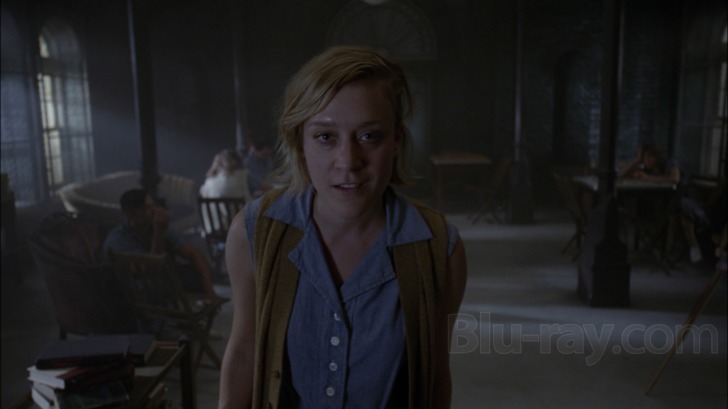
The fact that American Horror Story: Asylum manages to weave together elements as disparate as alien abductions to electroconvulsive shock therapy to a winking reference to Tod Browning's Freaks is some indication of just how diverse this season is. That also means there's less of the intensely focused dread that suffused the first season, with this season's tone at times all over the map, but there are chills galore scattered throughout this season, including some rather graphic and disturbing imagery. Once again, the show features some absolutely amazing performances, capped here by a simply unforgettable turn by Jessica Lange as a nun whose vicious proclivities may not be all that they initially seem. My own personal reaction to American Horror Story: Asylum is overwhelmingly positive, while still recognizing that on a fundamental level, the show wasn't quite as subliminally unsettling this year as last. Still, it's a phenomenally original enterprise, and I for one am looking forward—with bated breath—to American Horror Story: Coven. Highly recommended.
Other editions
American Horror Story: Other Seasons

American Horror Story: The Complete First Season
2011

American Horror Story: The Complete First Season
Includes Bonus DVD
2011

American Horror Story: Coven
2013-2014

American Horror Story: Coven
Includes Bonus DVD
2013-2014

American Horror Story: Freak Show
2014-2015

American Horror Story: Hotel
2015-2016

American Horror Story: Roanoke
2016

American Horror Story: Cult
2017

American Horror Story: Apocalypse
The Complete Eighth Season
2018

American Horror Story: 1984
The Complete Ninth Season
2019
Similar titles
Similar titles you might also like

The Haunting of Hill House
Extended Director's Cut
2018

Marrowbone
The Secret of Marrowbone
2017

The Possession of Hannah Grace
2018

The Others
2001

Bates Motel: The Complete Series
2013-2017

Winchester
2018

The Haunting
1963

House on Haunted Hill 3D
1959

Sinister
2012

The Terror
Special Edition | Includes The Little Shop of Horrors
1963

The Other
Limited Edition to 3000 - SOLD OUT
1972

Mary
2019

Frailty
2001

The Skeleton Key
2005

Dream House
2011

Paranoiac
Collector's Edition
1963

The Messengers
2007

A Cure for Wellness
2016

The Blair Witch Project
1999

Dark Shadows: Complete Series - Seasons 1 - 6
1966-1971